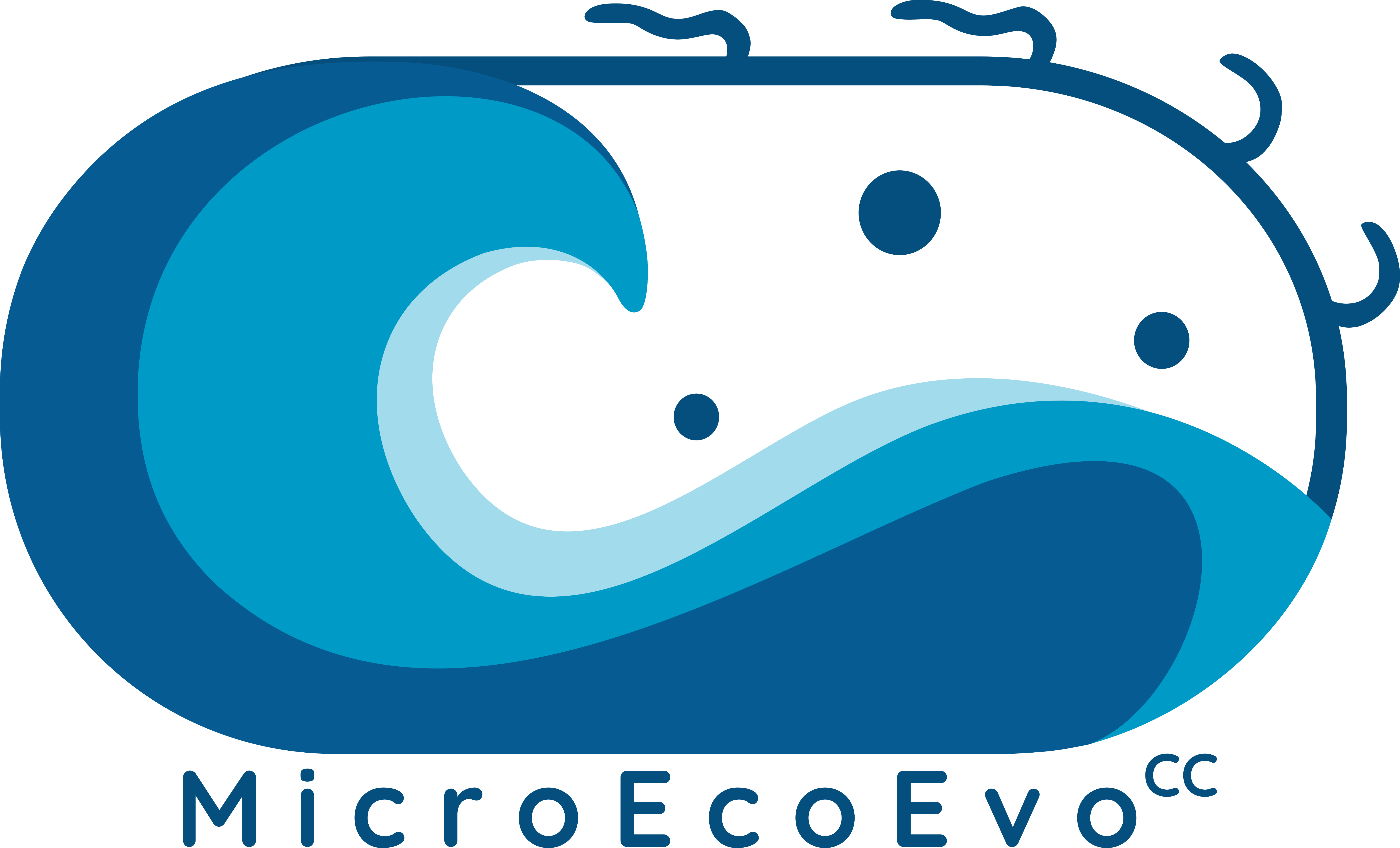Your cart is currently empty!
Publications
-
The gorgonian coral Eunicella labiata hosts a distinct prokaryotic consortium amenable to cultivation
Tina Keller-Costa, Dominic Eriksson, Jorge M. S. Gonçalves, Newton C.M. Gomes, Asunción Lago-Lestón and Rodrigo Costa
Microbial communities inhabiting gorgonian corals are believed to benefit their hosts through nutrient provision and chemical defence; yet much remains to be learned about their phylogenetic uniqueness and cultivability. Here, we determined the prokaryotic community structure and distinctiveness in the gorgonian Eunicella labiata by Illumina sequencing of 16S rRNA genes from gorgonian and seawater metagenomic DNA. Furthermore, we used a ‘plate-wash’ methodology to compare the phylogenetic diversity of the ‘total’ gorgonian bacteriome and its ‘cultivatable’ fraction. With 1016 operational taxonomic units (OTUs), prokaryotic richness was higher in seawater than in E. labiata where 603 OTUs were detected, 68 of which were host-specific. Oceanospirillales and Rhodobacterales predominated in the E. labiata communities. One Oceanospirillales OTU, classified as Endozoicomonas, was particularly dominant, and closest relatives comprised exclusively uncultured clones from other gorgonians. We cultivated a remarkable 62% of the bacterial symbionts inhabiting E. labiata: Ruegeria, Sphingorhabdus, Labrenzia, other unclassified Rhodobacteraceae, Vibrio and Shewanella ranked among the 10 most abundant genera in both the cultivation-independent and dependent samples. In conclusion, the E. labiata microbiome is diverse, distinct from seawater and enriched in (gorgonian)-specific bacterial phylotypes. In contrast to current understanding, many dominant E. labiata symbionts can, indeed, be cultivated.
https://doi.org/10.1093/femsec/fix143
-
Automated structure prediction of trans-acyltransferase polyketide synthase products
Eric J. N. Helfrich, Reiko Ueoka, Alon Dolev, Michael Rust, Roy A. Meoded, Agneya Bhushan, Gianmaria Califano, Rodrigo Costa, Muriel Gugger, Christoph Steinbeck, Pablo Moreno and Jörn Piel
Bacterial trans-acyltransferase polyketide synthases (trans-AT PKSs) are among the most complex known enzymes from secondary metabolism and are responsible for the biosynthesis of highly diverse bioactive polyketides. However, most of these metabolites remain uncharacterized, since trans-AT PKSs frequently occur in poorly studied microbes and feature a remarkable array of non-canonical biosynthetic components with poorly understood functions. As a consequence, genome-guided natural product identification has been challenging. To enable de novo structural predictions for trans-AT PKS-derived polyketides, we developed the trans-AT PKS polyketide predictor (TransATor). TransATor is a versatile bio- and chemoinformatics web application that suggests informative chemical structures for even highly aberrant trans-AT PKS biosynthetic gene clusters, thus permitting hypothesis-based, targeted biotechnological discovery and biosynthetic studies. We demonstrate the applicative scope in several examples, including the characterization of new variants of bioactive natural products as well as structurally new polyketides from unusual bacterial sources.
https://www.nature.com/articles/s41589-019-0313-7
-
Genome sequence of the marine alphaproteobacterium Lentilitoribacter sp. EG35 isolated from the temperate octocoral Eunicella gazella
Tina Keller-Costa, Selene Madureira, Ana S. Fernandes, Lydia Kozma, Jorge M.S. Gonçalves, Cristina Barroso, Conceição Egas and Rodrigo Costa
We report the genome sequence of Lentilitoribacter sp. strain EG35 isolated from the octocoral Eunicella gazella sampled off the coast of Portugal. We reveal the coding potential for the biosynthesis of polyhydroxyalkanoates — biodegradable polyesters that may serve bioplastics production, diverse homoserine lactone-like communication signals, and four putatively novel natural products.
https://doi.org/10.1128/mra.00872-24
-
Aquimarins, Peptide Antibiotics with Amino-Modified C-Termini from a Sponge-Derived Aquimarina sp. Bacterium
Cora L. Dieterich, Silke I. Probst, Dr. Reiko Ueoka, Dr. Ioana Sandu, Daniel Schäfle, Dr. Michael Dal Molin, Hannah A. Minas, Prof. Rodrigo Costa, Prof. Dr. Annette Oxenius, Prof. Dr. Peter Sander, Prof. Dr. Jörn Piel
Genome mining and bioactivity studies suggested the sponge-derived bacterium Aquimarina sp. Aq135 as a producer of new antibiotics. Activity-guided isolation identified antibacterial peptides, named aquimarins, featuring a new scaffold with an unusual C-terminal amino group and chlorine moieties. Responsible for the halogenation is the FeII/α-ketoglutarate-dependent chlorinase AqmA that halogenates up to two isoleucine residues in a carrier protein-dependent fashion. Total syntheses of two natural aquimarins and eight non-natural variants were developed. Structure–activity relationship (SAR) studies with these compounds showed that the synthetically more laborious chlorinations are not required for antibacterial activity but enhance cytotoxicity. In contrast, variants lacking the C-terminal amine were virtually inactive, suggesting diamines similar to the terminal aquimarin residue as candidate building blocks for new peptidomimetic antibiotics.
https://doi.org/10.1002/ange.202115802
-
Insights into the Antimicrobial Activities and Metabolomes of Aquimarina (Flavobacteriaceae, Bacteroidetes) Species from the Rare Marine Biosphere
Sandra Godinho Silva, Patrícia Paula, José Paulo da Silva, Dalila Mil-Homens, Miguel Cacho Teixeira, Arsénio Mendes Fialho, Rodrigo Costa andTina Keller-Costa
Two novel natural products, the polyketide cuniculene and the peptide antibiotic aquimarin, were recently discovered from the marine bacterial genus Aquimarina. However, the diversity of the secondary metabolite biosynthetic gene clusters (SM-BGCs) in Aquimarina genomes indicates a far greater biosynthetic potential. In this study, nine representative Aquimarina strains were tested for antimicrobial activity against diverse human-pathogenic and marine microorganisms and subjected to metabolomic and genomic profiling. We found an inhibitory activity of most Aquimarina strains against Candida glabrata and marine Vibrio and Alphaproteobacteria species. Aquimarina sp. Aq135 and Aquimarina muelleri crude extracts showed particularly promising antimicrobial activities, amongst others against methicillin-resistant Staphylococcus aureus. The metabolomic and functional genomic profiles of Aquimarina spp. followed similar patterns and were shaped by phylogeny. SM-BGC and metabolomics networks suggest the presence of novel polyketides and peptides, including cyclic depsipeptide-related compounds. Moreover, exploration of the ‘Sponge Microbiome Project’ dataset revealed that Aquimarina spp. possess low-abundance distributions worldwide across multiple marine biotopes. Our study emphasizes the relevance of this member of the microbial rare biosphere as a promising source of novel natural products. We predict that future metabologenomics studies of Aquimarina species will expand the spectrum of known secondary metabolites and bioactivities from marine ecosystems.
https://doi.org/10.3390/md20070423
